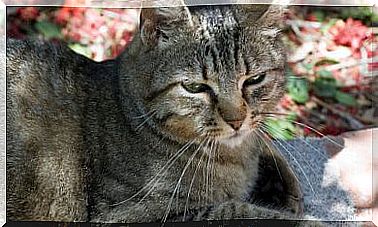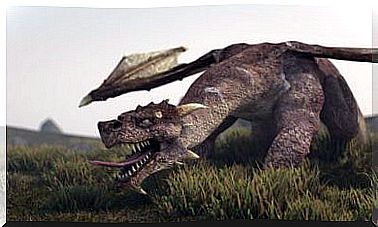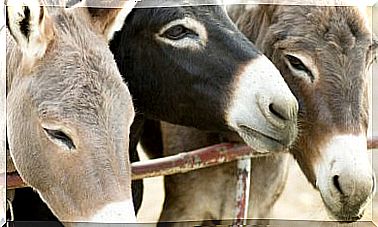Little Known Wild Cats

When you think of wild cats, lions, Bengal tigers or leopards immediately come to mind; but of the 38 extant wild cat species, 31 are made up of small felines, about the size of a domestic cat.
Felines are extraordinary creatures! Unfortunately, their existence is seriously threatened by man: almost all species in nature are at risk of extinction, with a constant reduction in populations caused by poaching and the destruction of their habitats.
This article introduces some of the lesser known wild cat species .
The rusty cat: among the smallest wild cats
It is the smallest wild feline in the world : 35-48 cm long, it weighs between 900 grams and 1.5 kilograms! The rusty cat has a short gray colored coat with rust colored spots on the shoulders and flanks.
Another characteristic is the white belly with large dark spots; the tail is darker than the rest of the coat and is about half as long as the body. It also features six dark stripes on each side of the head, extending across the cheeks and forehead.
It lives in the tropical forests of Sri Lanka and southern India. This species is endangered due to the destruction of its habitat, which is gradually being replaced by arable land.
The cat of the sands
The sand cat can reach 50 cm in length, plus about 30 cm of the tail. The largest males do not reach 3.5 kilograms in weight.
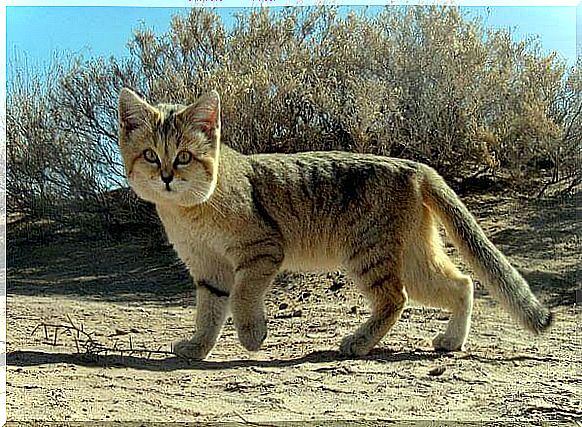
The sand cat is characterized by a sand-colored coat with dark streaks, more evident in the African subspecies and easily visible in the upper part of the front legs; the tip of the tail is also dark in color.
It is the feline best adapted to sandy deserts: it has a large head and large ears, which allow it to disperse heat easily.
This species of feline is present in the Sahara desert, in Egypt, Arabia, Pakistan, Afghanistan, Iran, Jordan, Syria, Iraq and in some regions of Asia, including the Karakum desert, where maximum temperatures can reach 80 °. C and drop down to -25 ° C.
The sand cat is an endangered species: the ban on hunting this breed is in force in many countries.
Pallas’s cat
This feline has dimensions similar to those of domestic cats: 46-65 centimeters in length, with a tail of 21-31 centimeters and a weight varying between 2.5 and 4.5 kilograms.

The thick coat protects it from the cold and wind; the fur is ocher in color with dark vertical stripes on the torso and front legs.
During the winter it changes color, becoming more gray and with fewer stripes than the summer color.
It has black rings on its tail and dark spots on its forehead, while its cheeks are white with thin black streaks.
These felines take refuge in caves, between the crevices of the rocks or in the burrows of marmots. They only go out in the afternoon to hunt for small mammals.
Pallas’s cat lives in the steppes of Mongolia, Siberia and Tibet, up to 5,000 meters above sea level. The species is threatened due to hunting, the destruction of its habitat and the decrease in the prey it feeds on.
Wild felines: the Andean cat
It is the most endangered species on the American continent. These felines are small and sturdy; the coat is gray or brown with vertical streaks on the back, spots on the sides and rings on the tail and legs.
It reaches a length of 60-80 centimeters, plus about 35 centimeters of tail and weighs between 4 and 7 kilograms.

The Andean cat is native to South America. Its distribution is limited to the areas of the Andes, Peru and northern Bolivia, Chile and Argentina.
It lives in areas characterized by the presence of vegetation that is not too high or dense, in the steppes and in rocky areas. Its habitat consists of areas between 3,000 and 5,000 meters above sea level, where trees no longer grow.
Although it lives only in high mountain areas, the valleys inhabited by humans act as barriers that considerably isolate the different populations of this feline. In addition, in Chile and Bolivia cats from the Andes are hunted out of superstition.
The clouded leopard
It is a feline of medium size and sturdy build (length between 60 and 110 centimeters and weight ranging from 11 to 65 kilograms), with short legs and a rather long tail.
The tail is used to maintain balance, while its paws are designed for climbing trees. Furthermore, it is characterized by a greater length of the hind legs compared to the front ones.
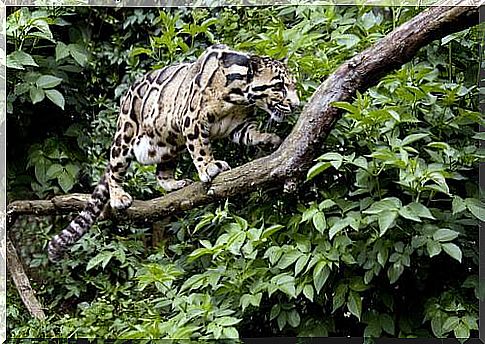
These felines are at risk of extinction due to poaching and the destruction of their habitat caused by deforestation. It is assumed that the population is now less than 10,000 adult specimens.
The clouded leopard’s coat is characterized by large irregular patches with a black border and brown inside, which help them blend into the vegetation. Its name derives from these dark elliptical spots, which resemble the shape of clouds.
Its habitat includes eastern India, southern China and Indochina. Clouded leopards can adapt to different ecosystems, including mountainous areas above 2000 meters in altitude.
The snow leopard among the wild cats
This species lives in the mountainous areas of Siberia, Russia, Pakistan, Mongolia, Tibet, India, Nepal and Uzbekistan, up to 6,000 meters above sea level.

Although smaller than other large predators, the snow leopard can weigh up to 75 kilograms. It has a sturdy and short body, with a long tail compared to other cat species.
This animal is perfectly adapted to cold climates, thanks to the compact body covered by a thick layer of thick fur.
In addition, it has small, furry ears and large claws similar to those of the polar bear, which allow it to move nimbly in the snow.
The coat is thick, of different shades of gray, with black rosette spots and white breast, and takes on yellowish or brown tones in some parts of the body.
The last remaining snow leopards are in danger of extinction due to poaching and climate change. Currently, only 4,000-9,000 are estimated to remain.
The great variety of wild cats
As this brief review shows, felines are mammals with a great morphological variety: in fact, there are wild felines as large as a St. Bernard and others the size of a domestic cat. Their coloring is also extremely varied, from darker to very light tones.
All this variety comes from the adaptation of these fantastic animals to the different ecosystems they live in around the world.
Their existence must be preserved by all means and with the utmost commitment; unfortunately many species are at risk of extinction due to the destruction of their habitats and poaching.


